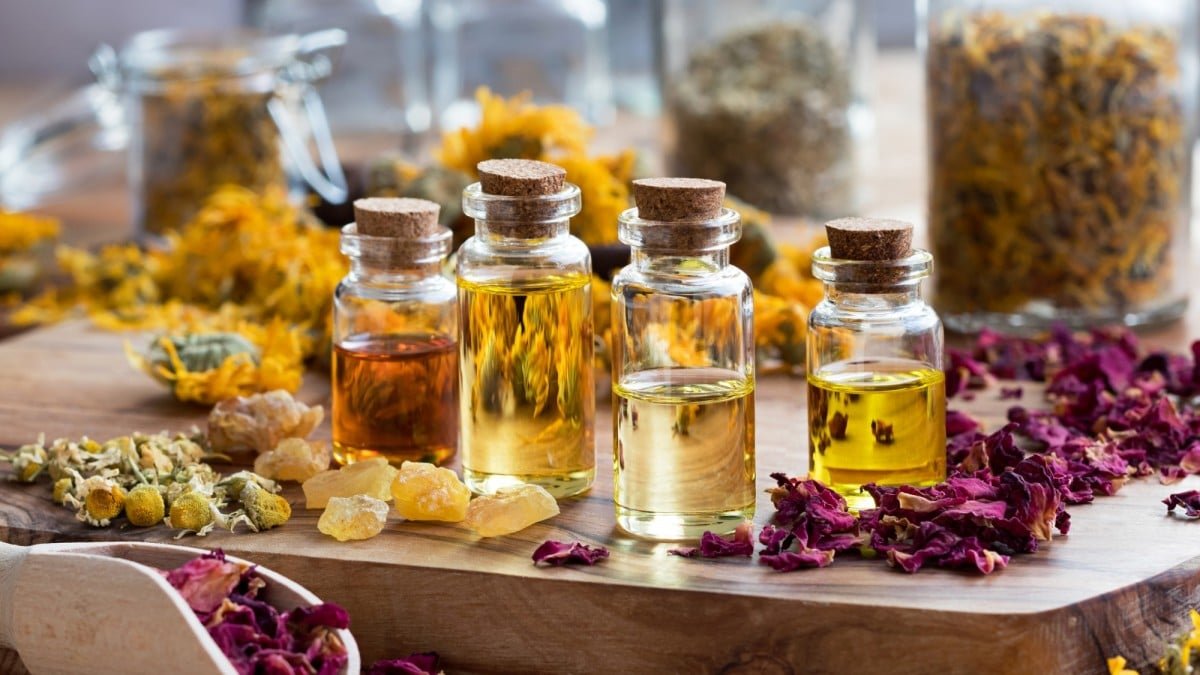Essential oils are steam volatile oils distilled from plant materials and represent the typical flavour and aroma of a particular plant. They are found in flowers, leaves, roots, seeds and barks and find use principally in perfumery and flavourings. The essential oil content of plant material is low, typically 1 to 3% of the plant weight. They are thus low-volume, very high value products. This makes them attractive crops for remote smallholders and forest users where high transport costs prevent the transport of lower value cash crops. Essential oils contain a complex mix of components and it is this mix that gives the “note” that experts recognise.
The quality of the oil obtained from a particular species will be influenced by where it is grown and how it has been processed. New producers are likely to meet with resistance from buyers as this is a very conservative market depending to a great extent on trust regarding supply and quality. Producers and buyers also closely guard information and “secrets”. Once established trading relationships are made, however, reliable markets can be gained.
Essential oil is the aromatic liquid which contains biological messengers for the particular plant’s life blueprint. The therapeutic use of essential oils promotes optimal human health and well-being. MEFBA offers essential oils that have been extracted using artisanal distillation. It also offers wild crafted and sustainably cultivated other rare and exotic botanicals for medicinal herbs, plant fats and fibre; for food, cosmetics, toiletries and clothes.
Home to the highest regions on Earth including the South-Western fringe of the Tibetan Plateau with an average elevation of almost 5 km (3 miles) above sea level and majestic Mount Everest reaching a height of 8,848 metres (29,029 feet or 5.5 miles) at its peak; the Himalayas are also ripe with ancient medicinal herbs, fibres, oils and minerals – many of which are widely considered to be among the healthiest natural well being ingredients and foods on the planet.
Constantly bombarded by high levels of ultraviolet radiation, extreme temperatures, heavy snows and dry, barren soil conditions and unsullied purest environment; the Himalayan medicinal and aromatic plants grow primarily in landscapes of perma frosted Tibetan plateaus and snow bound mountain vales. Almost contrasting to this, just within 10 kilometres as a bird flies south, the land is bestowed with swathes of tropical evergreen forests in the foothills with its hot and humid precipitations.
This extraordinary complex topographic and huge altitude range of climatic diversities mean Nepal experiences a wide range of climates, from humid subtropical in the foothills to cold and dry desert conditions on the Tibetan side of the range. The natural bounties of Nepal are almost unparalleled elsewhere. These exotic botanicals and rare minerals since time millennia have helped the continuum and success of the ancient Indian ‘ Ayurveda’ system to the present day. It was only natural that the Nepalese Himalayan herbal sources form an integral part of the traditional Tibetan medicine heritage and the same is the story for the traditional Chinese medicine to some extent. Flowers, fruits, berries, roots, bark, resin, minerals, etc. are wildcrafted and cultivated by the forest communities, indigenous people and villagers for food, medicine, fibre, religious purposes, etc. These communities are the repositories of an intimate knowledge about the benefits of the wild and forest botanicals which has to be preserved as a living human heritage to be passed on to the future generations. The vicissitudes of human activities and its adverse effect on the climate has posed a serious challenge to the traditional human-environment balance. The livelihoods of ‘the first in the line’ underprivileged and excluded communities must be embedded to endure the sustainable use of the natural bounty to leverage conservation of forest botanicals.
We at Mt. Everest Forest Botanicals Alliance trust in the collective wisdom and strength of these resilient communities to believe that the human race is a part of nature and the geo environment balance is crucial for human sustenance and to flourish. Our obligation to mother earth is to live in harmony with it. MEFBA members want to translate every local forestry action into a serious business of climate mitigation, thus its livelihood SMEs are designed around the philosophy of nurturing thereby striking the balance of nature and letting it self-heal and regenerate. Every visit to the forest by the community member for wildcrafting the botanicals is a spiritual reconnection with the trees. Our forest dependent communities can never be harsh with mother nature.
As a constituent unit, MEFBA groups are organised as local forest user cooperative societies. In Participatory Learning for Action collective methodological approach, with the aim of facilitating local capacity, to analyse their own situation and to develop a common perspective on natural resource management and agroforestry at village level. They plan, discuss and design business projects (with help from MEFBA social mobilisers), resolve conflicts, take action and monitor and evaluate according to a local agenda using a range of interactive tools and methods. Further, a separate supplementary training is organised in ‘financial literacy’ for the weaker section focussed groups of illiterate community members from the excluded, minorities and indigenous communities. Follow ups are monitored closely so that the members can demonstrate confidence. This hand holding and focussed monitoring goes a long way in empowering the weaker section in the group.
MEFBA mentors the constituent cooperatives in enterprise operation and management at all times.
The group takes up a social business dealing in NTFP producing a range of products:
- Essential oils
- Medicinal and Aromatic Plants including herbs
- Chiuri Butter
- Chiuri Honey
- Soapberry (Reetha)
- Hemp & Wild Nettle (Allo) Fibres


